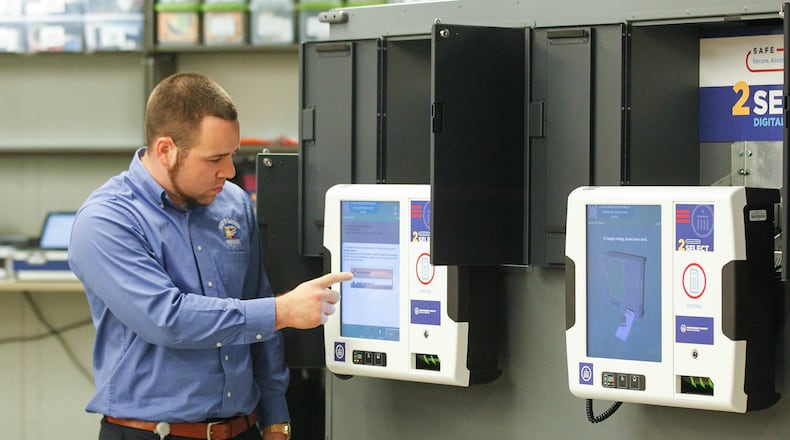“We don’t need to radically overhaul the way Ohio does elections,” he said while visiting the Montgomery County Board of Elections on Wednesday afternoon. “I would consider these changes a polishing of the current system.”
State Reps. Bill Seitz, R-Cincinnati, and Sharon Ray, R-Wadsworth, plan to introduce a 12-point piece of legislation they say is balanced to make “voting easy and cheating hard.”
The bill would create an online system for requesting mail-in ballots, automate voter registration at BMV offices and move up the deadline for requesting an absentee ballot from three days to 10 days before the election.
The measure would also tighten voter ID requirements, limit drop boxes to election board premises and erase early voting the day before an election, steps which some Democrats oppose.
State Rep. Willis Blackshear Jr., D-Dayton, said he opposes doing away with early in-person voting on the Monday before elections following a weekend in which campaigns typically make a final blitz.
“If it’s not broke, don’t fix it,” said Blackshear, who worked at the Montgomery County Board of Elections before voters sent him to the Statehouse.
While any day before an election can be chaotic, Blackshear said early voting wrapped up at 2 p.m.
“I felt like we were able to manage it,” he said. “I don’t see why we need to take that out all of a sudden. It’s worked very well for us these last years.”
Blackshear said he would wait to comment on other aspects of the proposal until after the bill is introduced.
Brian Sleeth, Warren County’s election’s director, and Sarah Greathouse, Montgomery County’s deputy director, who are both active with the Ohio Association of Elections Officials, said the organization representing county elections officials will wait to see what language winds up in the bill expected to be introduced next week.
“We’ve just seen bits and pieces,” Sleeth said. “As soon as this bill gets released, we’re scheduled to sit down and read it.”
Greathouse said the group endorses only legislation receiving a supermajority of support.
“Whatever the OAEO does, we do as a group together in a bipartisan manner. If it’s a split decision, we don’t endorse,” she said.
Polling shows 55% of Republicans continue to believe falsely that former President Donald Trump’s loss in November was the result of illegal voting or election rigging, according to a Reuters/Ipsos poll taken the last week in March.
The same poll showed 81% of Americans say it’s important for the government to make it easier to vote, but 74% also believe in new limits to protect elections from fraud.
Trump won Ohio with 53% of the vote. President Joe Biden won both the nationwide popular vote and the Electoral College count, coming after multiple Republican court challenges in close states and a joint session of Congress disrupted by an attack on the U.S. Capitol.
The proposed Republican legislation follows other Republican-dominated statehouses down a slippery slope of hampering people’s ability to vote, Ohio Democratic Chair Liz Walters said.
“In a state that has set the bar for extreme anti-voter laws, this proposal actively takes steps to put Ohio further back in the fight for access to the voting booth,” Walters said in a statement last week. “By limiting Ohioans’ ability to vote and by sowing confusion, Statehouse Republicans are once again attacking the fundamental right to vote in this state.”
Sleeth said he is an avid supporter of a statewide online absentee ballot application system like one in the proposal.
“That’s something that I’m really looking forward to as an election official,” he said.
Some Democrats last week criticized the proposal for requiring two forms of identification for voters requesting their ballot online. LaRose called that unfounded.
While filling out a printed absentee ballot request, a voter can use one form of identification and their written signature as a second, a trustworthy online application system must use a second form of identification because it can’t use a written signature, LaRose said.
“Instead of having a signature — because you can’t have that — what they would have on the online system is the last four of your (Social Security number) and a state ID or driver’s license number,” he said.
About the Author

